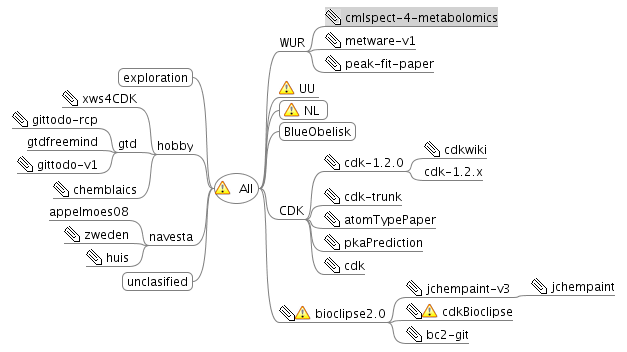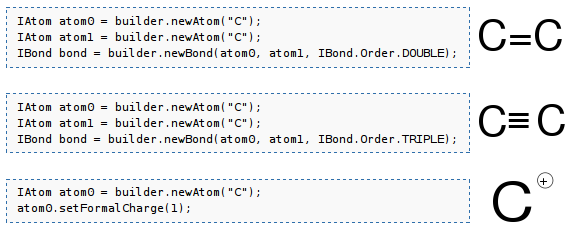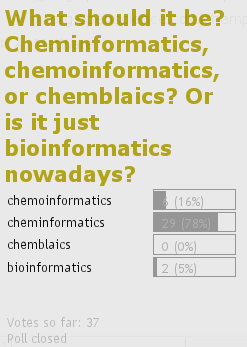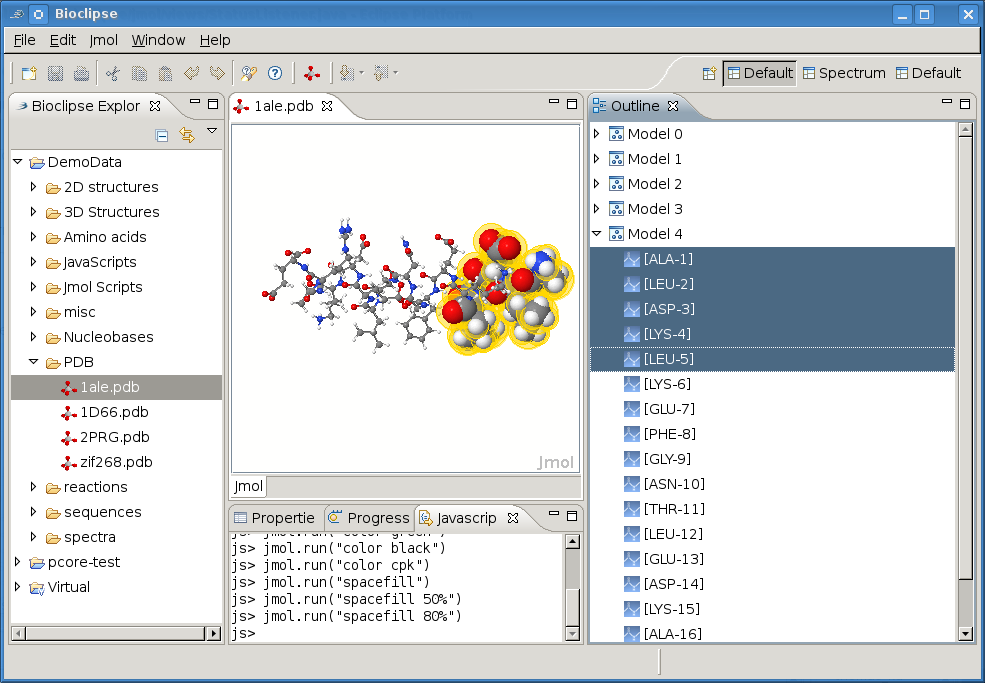-

GitToDo support for Freemind: graphical mapping of important things on my schedule
About a week ago, I hooked up my GitToDo software with Freemind. This allows me to organize the projects I am working on, without having to code this in GitToDo directly. I also immediately take advantage of visualization, for example, adding an icon for projects with one or more TODO items marked TODAY or URGENT:
-
Chem-bla-ics turns 3!
Five days ago, my chem-bla-ics blog turned 3. Here’s the first post. It defined:
-
pKa prediction, or, how to convert a JCIM paper into Java
Lee et al. published last week a paper on pKa prediction (doi:10.1021/ci8001815). As the paper says, the pKa, and in particular the ionic state of a molecule at physiological pH, affects pharmacokinetics and pharmacodynamics. The paper describes a (binary) decision tree using presence or absence of SMARTS substructures to traverse the tree, allowing prediction of monoprotic molecules.



